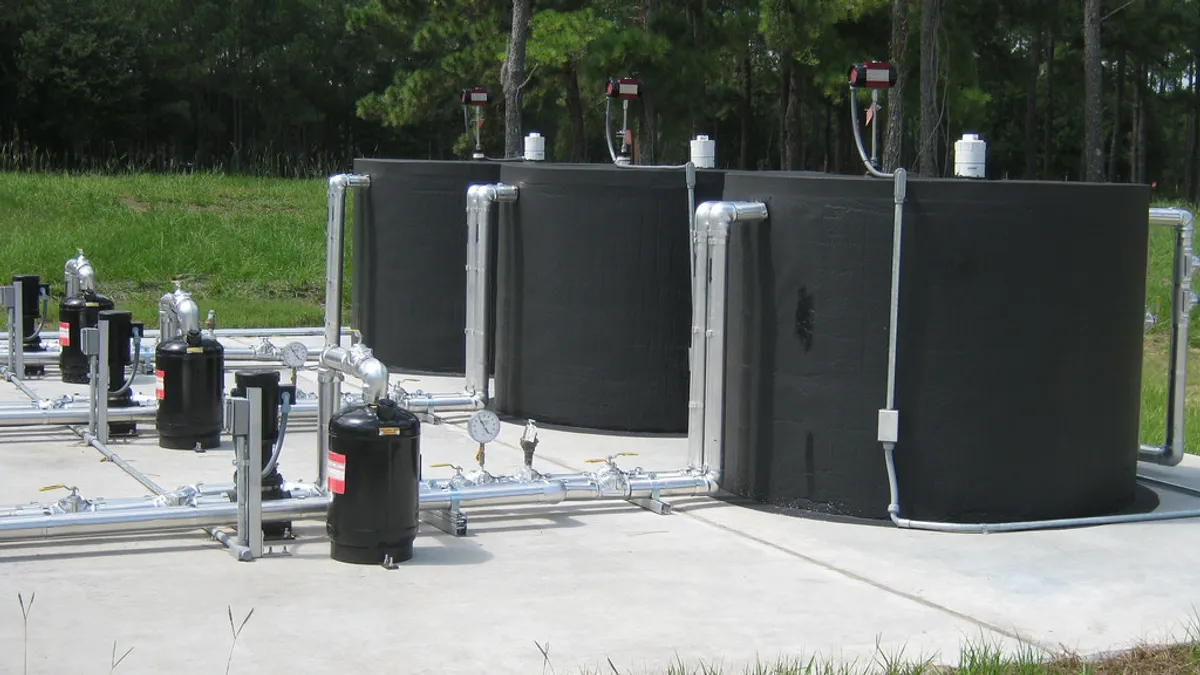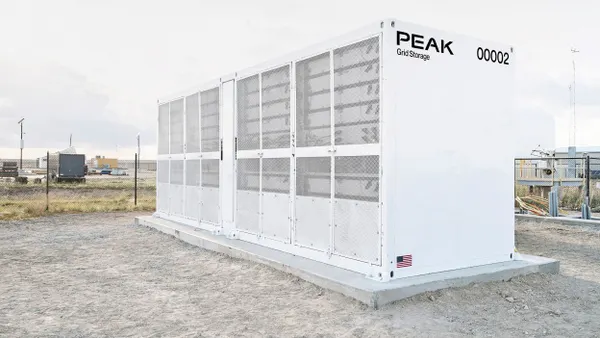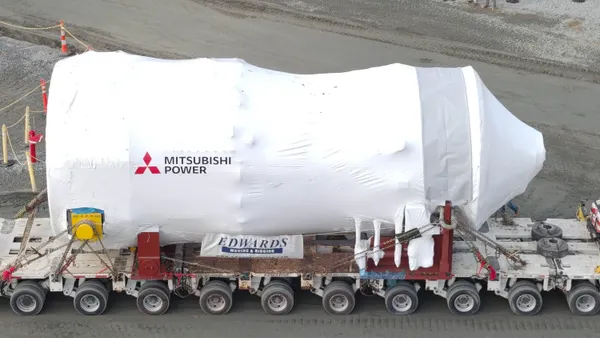Dive Brief:
- Malta will partner with Siemens Energy to co-develop components for Malta's long-duration thermal energy storage system.
- Malta, a Google X spinoff, uses a pumped heat storage technology that captures energy from a power plant or the grid and stores it as heat in molten salt or as cold in an antifreeze-like solution. That energy can then be released to power a heat engine to send electricity back to the grid.
- Through the cost-sharing and development partnership, announced last week, Siemens and Malta will produce a heat pump and other engine components that could support a 100 MW system for between 10 and 200 hours of storage.
Dive Insight:
As utilities integrate more renewables, there is a growing need for long-duration storage that can handle day-to-day and seasonal variability in renewable generation.
According to the Department of Energy (DOE), some 93% of the 173.7 GW of installed and operational storage capacity worldwide is short-duration storage that provides up to 10 hours of discharge at rated power.
Malta promises that its pumped heat system is attainable and scalable, with the possibility to scale up to 200 hours of storage. "The beauty of this system is that every one of the components has already been proven" and could be applied to any utility, said Erhan Karaca, Malta's vice president of engineering, including in existing infrastructure.
Dharik Mallapragada, a research scientist at the Massachusetts Institute of Technology Energy Initiative, said the pumped thermal has certain advantages in the long-duration storage market, especially in its relatively lower materials cost and ability to be scaled to meet the needs of the utility. However, compared to other thermal storage systems, Mallapragada said heat pumps tend to be more expensive, which has limited their role in the marketplace.
"When you look at the economies of scale and the efficiency advantages, there's a lot that makes this appealing," Mallapragada said. "There's some technology that needs to be tested out and demonstrated to prove that it works, but as a long-duration storage system, it merits attention."
Mallapragada was a co-author on a recent paper published in Nature Energy that found storage costs and discharge efficiency needed to improve for more innovative long-duration storage systems to displace nuclear power or natural gas power plants as grid reliability tools. The long-duration field is still in a state of flux, with various technologies — ranging from hydropower to hydrogen storage to aqueous sulfur flow batteries — competing for viability and market share. Despite the potential efficiency advantages and scalability, thermal energy storage has remained a relatively small part of the marketplace, although there are multiple demonstration projects underway.
Karaca said the Siemens partnership will help bring Malta's technology closer to deployment by relying on the manufacturer's experience in developing parts. The heat pump and engine components being developed are similar to off-the-shelf Siemens products, Karaca said, and the partnership will help get those products produced at scale.
Siemens has also partnered with EnergyNest on a thermal battery product for industrial customers and is researching deployment of hydrogen as a storage and fuel source in a DOE-backed study with Duke Energy and Clemson University.
Malta, meanwhile, has said it expects to commission its first commercial-scale plant in 2024 or 2025. The company in May announced a partnership with Duke Energy to study the efficacy of installing a thermal pump storage system in a converted coal plant.














